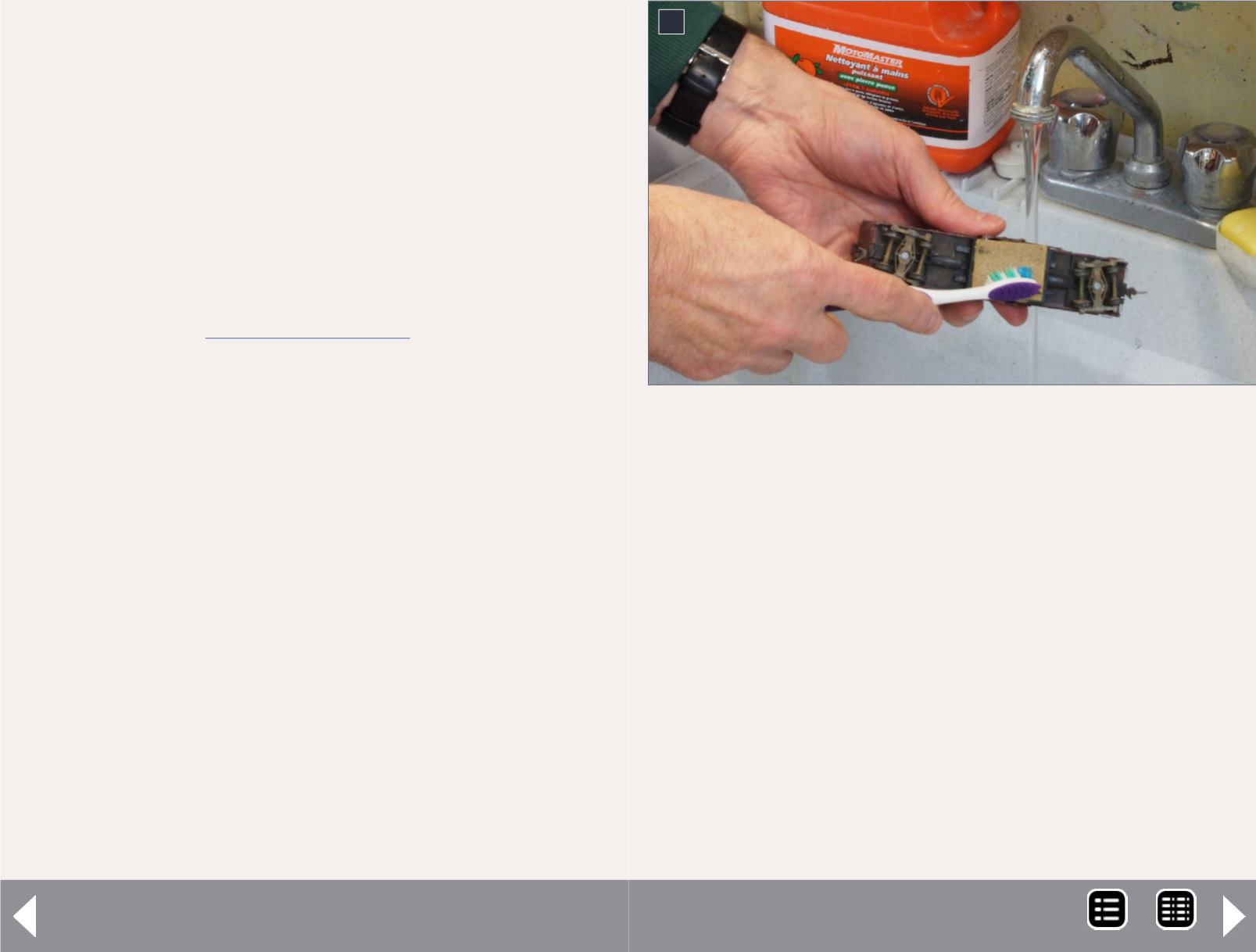
round of track cleaning. My conjecture is that the oil degrades
after a while and has to be cleaned off and re-applied regularly.
A very simple rail treatment is graphite. Yes, a good old pen-
cil, or better yet, a graphite stick from an art store (cost about
$1.50, I use a 2B Hardness). Clean the rails and rub the graphite
stick along to give a thin coating of graphite over the surface.
Graphite is also an excellent lubricant, so you might have prob-
lems with wheel slippage. If you have steep grades, this might
not be for you!
One year ago, I treated a section of my mainline with graphite.
Just recently, locomotives started stalling on that section and it
required cleaning. I had to clean the rest of the track at least 5
times over that same year, so I would say that the graphite was
pretty successful! For cost and simplicity this is pretty hard to
5
5. The Masonite cleaning sled can be cleaned with a
toothbrush and bar of soap under the sink.
Cleaning the cloth pads can be accomplished in the sink with a
toothbrush and bar of soap. I have a long section of track that
is difficult to access and this is the only way to clean it.
Problem #4: Maintenance. My track is
clean. How do I keep it that way?
The first steps start before you even start laying the track!
Finish the layout room so that dust doesn’t come from the ceil-
ing or from the cement floor.
A simple method of track maintenance is to run Masonite sled
track cleaning cars
every time you run
trains. You will need several of them and change them out fre-
quently as the pad gets dirty fast. The pad can be cleaned with
sandpaper or a toothbrush and bar of soap in the sink.
A number of treatments that can be applied to the rails; I have
tried some of these methods, but there are others such as CRC
2-26, Flitz polish and even “gleaming” that I haven’t tried.
I did try some metal polish used for polishing chrome bits on
cars. It was messy to apply and worked for a couple of months,
but was not particularly effective.
The next treatment I tested is to apply a small amount of a
conductive oil on the rails. This can be Wahl clipper oil or a
product by AeroCar (Act-6006). These products do seem to
improve performance, in my experiences, especially with
sound equipped locomotives. However, the improvement
does not seem to last. I found that after five or six weeks there
would be a rather sudden and drastic failure where locomo-
tives would start stalling in multiple places on the layout, and
I couldn’t keep trains running without going through another
Experiments with track cleaning - 5
MRH-Jul 2014


